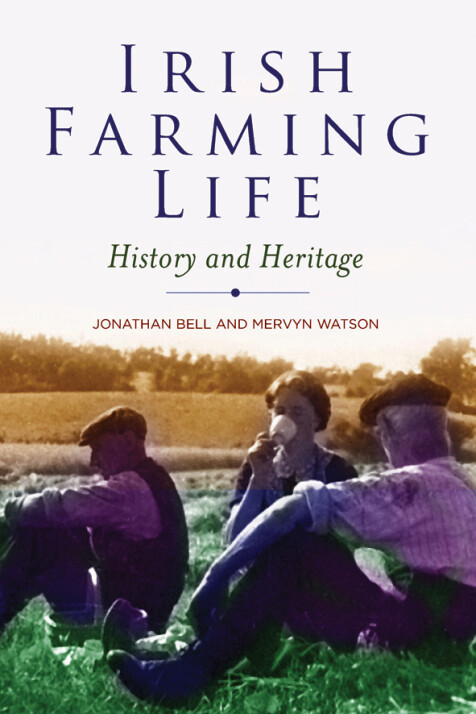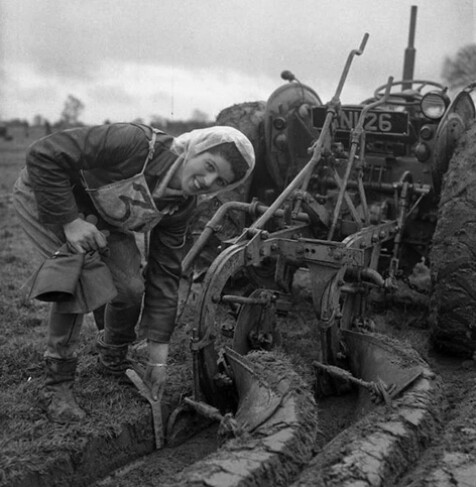Irish farming life
History and heritage
Jonathan Bell & Mervyn Watson
‘[The book] opens with a delightful, short account of country people talking … the use of literary, oral and folklore sources to enliven and illuminate the text is one of the many strengths of Irish Farming Life … [The authors’] emphasis on warmth, sociability, and neighbourliness is well balanced against themes of confrontation and conflict of interest. The result is a more rounded appreciation of the complexities and nuances of social relations in the Irish countryside. In short, this book has all the makings of a modern-day classic’, Liam Kennedy, Irish Literary Supplement (Spring 2017).
‘This splendid book … is a sort of sequel to [the authors’] 2008 A history of Irish Farming … Bell and Watson’s writing remains highly engaging, with occasional humor and several nice turns of phrase, and they again make extensive use of very well-chosen quotations and marvelous illustrations: the book contains one hundred and four pictures, forty-one of them in color … Irish Farming Life is a superbly constructed and extremely engaging book filled with color, variety and insights’, David R. Stead, Agricultural History (Winter 2016).
‘A very timely work … It is an exploration of the role of memory and culture in shaping our view of the rural farming landscape of Ireland and why we continue to celebrate it. [The authors] have now, rather bravely, brought farming history and heritage together in one volume. This book is very much about the “culture” in the “agriculture” … It is thoroughly researched and accessible … Extremely well crafted and peppered with a string of stories, photographs, sketches and paintings but also with quotations from poetry, novels and songs which give pleasure as well as insight … A wonderful, optimistic book about one of the key narratives of the Irish historical experience’, Liam Campbell, Donegal Annual (2015).
‘This book covers a wide range of topics … [it is] a well-thought-out text with a logically ordered approach … [the authors’] analysis allows us to appreciate how the countryside works ... The authors succeed in presenting the complex web of technical, social and cultural achievements of the Irish farming community. The book is surprisingly engaging and stimulating. It goes a long way toward challenging the prejudices of official historians ... An excellent piece of work and highly recommended,’ Archaeology Ireland (Winter 2014).
‘I found this book to be completely absorbing. It is scholarly but eminently readable for anyone interested in rural Ireland and/or farming over the last few hundred years … There are over a hundred illustrations, mainly photos. The photos are fascinating … I heartily recommend this book. It will be enjoyed by anyone interested in history (farming and social) or rural life (whether it’s in Ireland or elsewhere) … It is not so much about farming as it is about farmers – men, women and children … The authors are to be commended in making their research so accessible, and also in explaining how they interpreted that research. I loved it, and now have a better idea of just how hard a farming life was (and still is, but with different challenges)', The TBR pile book blog (February 2015).
‘Both the authors of this book worked for over thirty years as curators at the Ulster Folk and Transport Museum. This latest publication is a welcome addition to the fruits of their previous collaboration – A history of Irish farming (2008) and Rooted in the Soil: a history of cottage gardens and allotments in Ireland since 1750 (2012) … the quality of the book’s production must be warmly commended … In addition to innumerable photographs (historic and contemporary), there are reproductions of drawings, cartoons, plans, posters, caricatures, and graphs; many extracts from literature; and, among other paintings, several striking images form the work of Philip Flanagan … each type of illustration is married to the text and illuminates it: the book is a feast for the eye …This book is informative, attractive and enjoyable. It is also thought-provoking. By highlighting the extent and value of our investment in conserving and interpreting our heritage at a time when levels of public expenditure are everywhere in sharp decline, it could not be more timely’, Peter Roebuck, Familia (2016).
‘This is a social history of Irish rural life over the past 250 years or so and, as such, its importance to the genealogist and local historian is clearly evident … we all trace our roots back firmly to the land. Whether this be Patrick Kavanagh’s stony grey soil of Monaghan, the rugged wilderness of Connemara or the lush rolling plains of Meath, it’s all the same, as they say, it’s in the blood … Bell and Watson have shone a light into this past, researched its history and revealed its heritage in a very accessible and wonderfully engaging manner … They used the uniquely personal and wonderfully revealing observations of writers, poets, painters, photographers and filmmakers, who crafted a special narrative of Irish country life … Through this extremely well researched and highly readable study, Bell and Watson open up the history and heritage of Irish rural life not as mere rustic journey tinged with nostalgia but by revealing its complexities, its contradictions, its strengths and, unfortunately, the fragility of its narrative. The book is lavishly illustrated throughout with wonderful photographs, and to assist further study, copious notes and an excellent bibliography’, Michael Merrigan, Ireland's Genealogical Gazette (April 2015).
‘Irish farming society, marked by an “expressive culture of music and poetry still celebrated by many Irish people, despite the onslaught of globalization”, comes under scrutiny through Bell and Watson’s remarkable research. Their work “is based on more than thirty years of work in the Ulster Folk and Transport Museum”. The authors “hope to highlight both the complexity of Irish farming history during the last 250 years, and the shared elements that unified it”. That said, they concentrate on the last one hundred years as documentation of ordinary lives grew. The illustrations and photographs are treasures unto themselves. Oral testimonies, local studies, literature and photography offer material on the changing farm situation, and lively anecdotes enrich the conversational narrative … Discussion of cottiers, migrant workers and spalpeens – the roving labourers who have left us their poetry and songs – prove fascinating … Discussions concerning changes brought by mechanization illustrate the angst and repercussions involved in labour reductions’, Mary McWay Seaman, Celtic Connection (June 2015).
‘A comprehensive but accessible examination from different angles of all aspects of rural life in the last couple of centuries and also how it has been perceived in popular culture’, Books Ireland (Jan/Feb 2015).
‘I was intrigued to read about Bell & Watson’s take on the farmer, the farmer’s wife, the Irish Mammy, the role of marriage in farming and much more … My favourite chapters were those on “the family”, “the neighbours”, and “farm labourers and servants”. For those with memories of the 1920s–1960s, they will hugely enjoy this … For readers who are also interested in discussions of historical methods and different interpretations, the opening and closing chapters provide eloquent and thorough discussion. [The book’s] strength is its examination of the various heritage via the arts – how they explore how film, literature, leisure events, re-enactments as well as oral stories contribute to our growing knowledge of the past. I particularly enjoyed the quotes form oral stories, it really brought Irish farm history to life. My only complaint – that it wasn’t long enough!’, Lorna Sixsmith, Irish farmerette blog (November 2014).
‘This is a great book about farming but it is also a canny history of Ireland. It traces key movements from sustenance to profit, sociality to atomization, culture to market, and humanity to heritage … This is an enjoyable and challenging read for anyone interested in Ireland’, Stiofáin Ó Cadhla, Journal of Folklore Research (March 2016).


